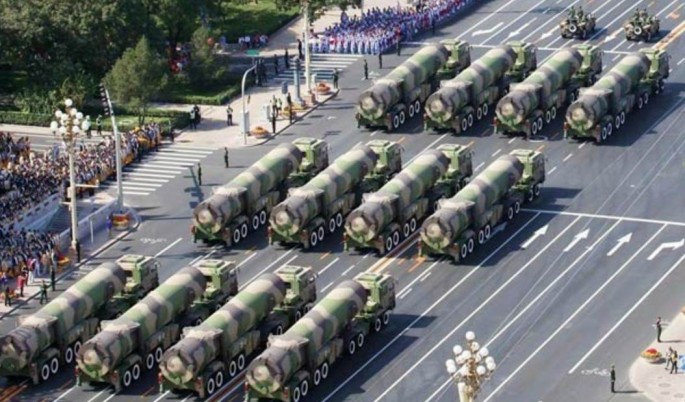The People's Liberation Army (PLA) has denied deploying more of its DF-41 (Dongfeng-41) intercontinental ballistic missile (ICBM) targeting the United States to Heilongjang province, while saying the real issue isn't the alleged deployment but the United States' arrogant disrespect for the PLA.
An op-ed in one of the PLA's English-language newspapers rails at the U.S. for not paying enough respect to the PLA, and said news of the DF-41 deployment will force the U.S. to respect the PLA as a fighting force that can do it severe damage in any war.
"The U.S. has not paid enough respect to China's military," laments the op-ed.
"Senior U.S. officials of the Asia-Pacific command frequently show their intention to flex their muscles with arrogance. The Trump team also took a flippant attitude toward China's core interests after Trump's election win.
"Enhancing communication and mutual understanding is not enough. China must procure a level of strategic military strength that will force the U.S. to respect it."
The op-ed pointed out that a China with or without the DF-41 is different to the outside world.
"That is the significance of the Dongfeng-41. We hope this strategic edge will be revealed officially soon. It will not bring the China Threat theory, but will only add authority to the People's Liberation Army."
To earn the respect of the United States Armed Forces, the PLA must develop a nuclear capability so strong "that no country would dare launch a military showdown with China under any circumstance, and such that China can strike back against those militarily provoking it.
"A military clash with the U.S. is the last thing China wants, but China's nuclear arsenal must be able to deter the U.S."
The PLA's alleged deployment of the DF-41s to Heilongjiang was made public last week in a series of apparently controlled leaks to news media.
Heilongjiang is the closest point to the United States from which China can launch its land-based ICBMs. The distance from Harbin, capital of Heilongjiang, to Washington D.C. is some 10,000 kilometers.
That's well within the 14,000 km range of the road-mobile DF-41, which has a payload of 10 to 12 nuclear warheads.
The claim the DF-41 is combat ready is at odds with western intelligence reports saying this ICBM is still in the flight-test stage of development. It was only in April 2016 China successfully conducted the seventh flight test of a DF-41 with two dummy warheads near the South China Sea amid growing tensions between Washington and Beijing.
It remains impossible for this ICBM to have entered operational status in the eight months since then. This means China might have deployed another ICBM to Heilongjiang but not the DF-41.



























